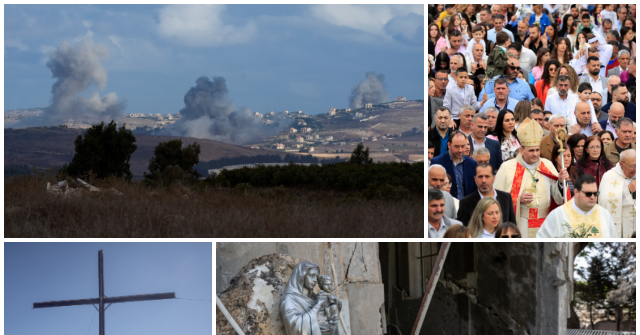In recent weeks, escalating tensions between Israel and Hezbollah have forced hundreds of Lebanese Christians from their homes in southern Lebanon, leading many to seek refuge in a nearby monastery. The conflict, which has resulted in dire humanitarian consequences, primarily impacts the border towns where these communities reside. Lebanon holds the second-largest Christian population in the Middle East, comprising an estimated 30 to 40 percent of its population, including Maronite Catholics, Melkite Greek Catholics, and other denominations. Christian communities are sprinkled throughout the country, often sitting alongside Shia, Sunni, and Druze populations, creating regions of complex religious dynamics.
Israeli airstrikes targeting Hezbollah have not differentiated between combatants and civilians, leading to forced evacuations in predominantly Christian areas such as Ain Ebel. Imad Lallous, the mayor of Ain Ebel, expressed the bewilderment and frustration of the Christian residents, who believe they are not involved in the conflict and do not host any Hezbollah presence. The Israeli military issued evacuation orders via calls and social media, demanding residents leave within an unreasonable timeframe, further contributing to the anxiety felt by the communities. This unexpected upheaval highlights the precarious position of Christian populations in a region characterized by sectarian tensions and vulnerability amidst broader geopolitical conflicts.
Many residents of Ain Ebel, and surrounding villages, have found shelter at the Our Lady of Annunciation monastery, a nearby Maronite Christian institution. This refuge, located close to the Israeli border, has taken in dozens of families fleeing violence, providing temporary relief amid the turmoil. Some residents, however, are choosing to move further north to Beirut, where they feel safer, while others remain in the monastery, unsure of when it will be safe to return home. This transience exacerbates the already strained living conditions for these communities, caught between their desire to remain in their homes and the instinct to seek safety from the violence rippling through their region.
In stark contrast to the fleeing families, some maintain their resolve to stay, fearing the loss of their homes and lands. Sister Maya El Beaino, a Catholic nun, highlighted that approximately 9,000 Christians in three nearby villages remain in constant peril due to the conflict. Her poignant comments underline a broader narrative regarding the Christian community’s resilience and unwillingness to abandon their historical homelands amidst the chaos. The personal stakes are high; many worry that leaving could mean irreversible loss, not just of physical homes but of cultural identity and historical legacy in a region with a rich religious tapestry.
The daily life of Christians living along the southern Lebanese border reflects both resilience and profound anxiety. Amid deteriorating security conditions, routine religious practices continue, such as the observance of mass and traditional ceremonies. However, the looming threat of conflict weighs heavily on these communities, particularly after witnessing the devastation an earlier conflict wrought in 2006. The memory of previous wars further intensifies fears about potential future escalations, especially with ongoing discussions surrounding possible ground invasions. The sentiment in these communities is one of exhaustion from continual cycles of violence and loss.
The precariousness of the situation is heightened by the significant socioeconomic challenges many families face. Despite the escalating hostilities causing initial waves of evacuation, many families have returned to southern Lebanon due to the high costs of living in Beirut and the emotional strain of separation from their loved ones. The closure of local institutions, like the St. Joseph’s Convent school, exacerbates educational and social challenges, as the community grapples with the trauma and uncertainties of ongoing conflict. The confluence of historical grievances, contemporary violence, and economic hardship paints a devastating picture of these communities, caught in a cycle of conflict as they struggle to navigate a future fraught with peril.

